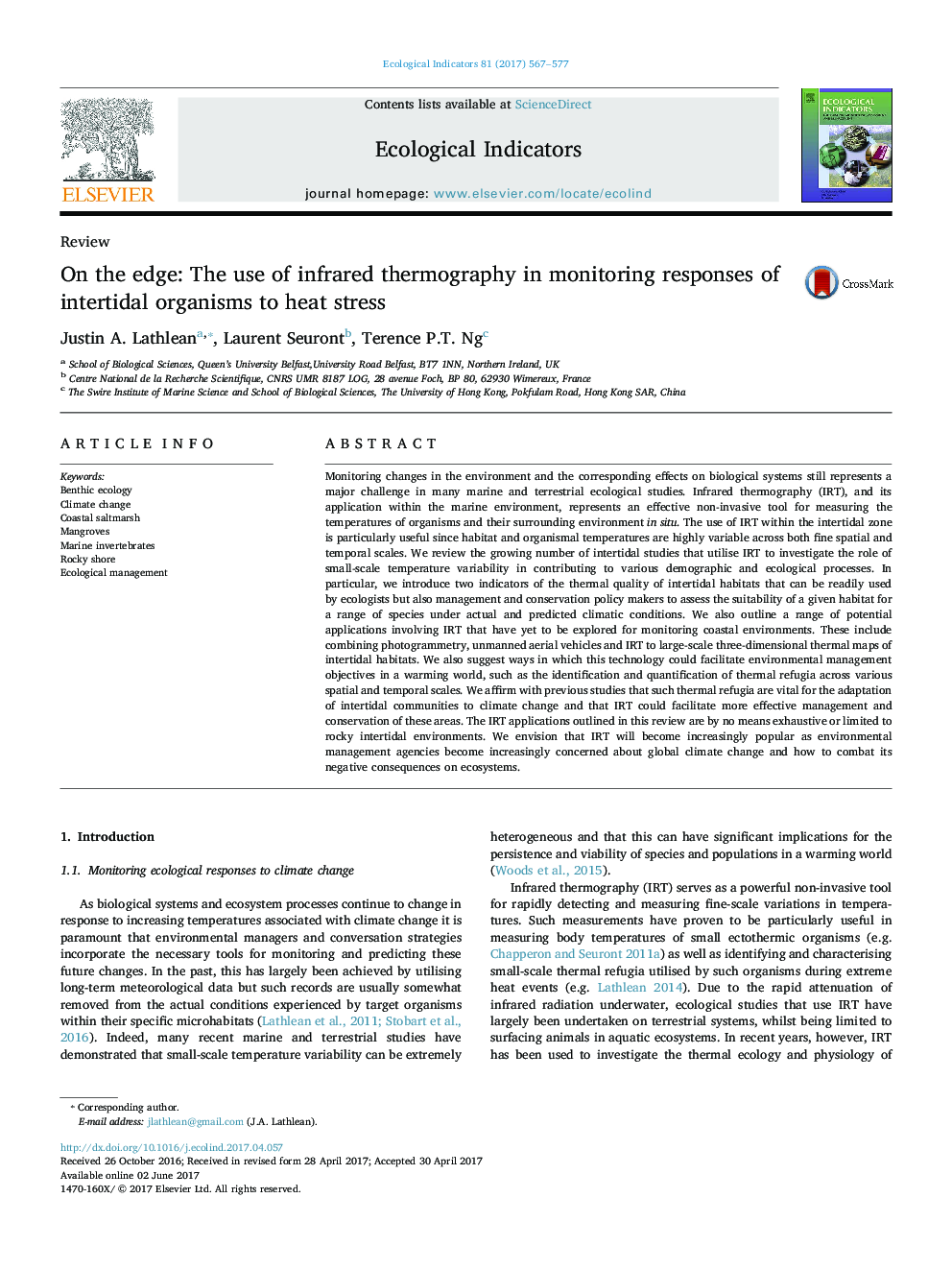| Article ID | Journal | Published Year | Pages | File Type |
|---|---|---|---|---|
| 5741458 | Ecological Indicators | 2017 | 11 Pages |
Monitoring changes in the environment and the corresponding effects on biological systems still represents a major challenge in many marine and terrestrial ecological studies. Infrared thermography (IRT), and its application within the marine environment, represents an effective non-invasive tool for measuring the temperatures of organisms and their surrounding environment in situ. The use of IRT within the intertidal zone is particularly useful since habitat and organismal temperatures are highly variable across both fine spatial and temporal scales. We review the growing number of intertidal studies that utilise IRT to investigate the role of small-scale temperature variability in contributing to various demographic and ecological processes. In particular, we introduce two indicators of the thermal quality of intertidal habitats that can be readily used by ecologists but also management and conservation policy makers to assess the suitability of a given habitat for a range of species under actual and predicted climatic conditions. We also outline a range of potential applications involving IRT that have yet to be explored for monitoring coastal environments. These include combining photogrammetry, unmanned aerial vehicles and IRT to large-scale three-dimensional thermal maps of intertidal habitats. We also suggest ways in which this technology could facilitate environmental management objectives in a warming world, such as the identification and quantification of thermal refugia across various spatial and temporal scales. We affirm with previous studies that such thermal refugia are vital for the adaptation of intertidal communities to climate change and that IRT could facilitate more effective management and conservation of these areas. The IRT applications outlined in this review are by no means exhaustive or limited to rocky intertidal environments. We envision that IRT will become increasingly popular as environmental management agencies become increasingly concerned about global climate change and how to combat its negative consequences on ecosystems.
